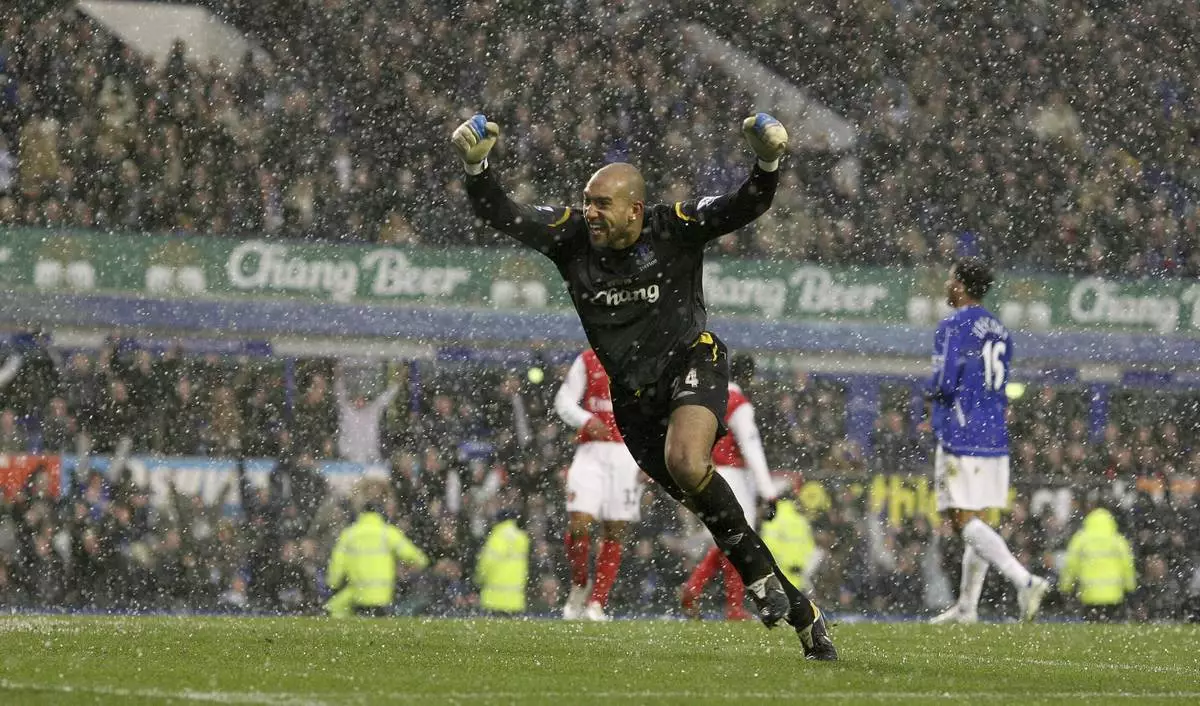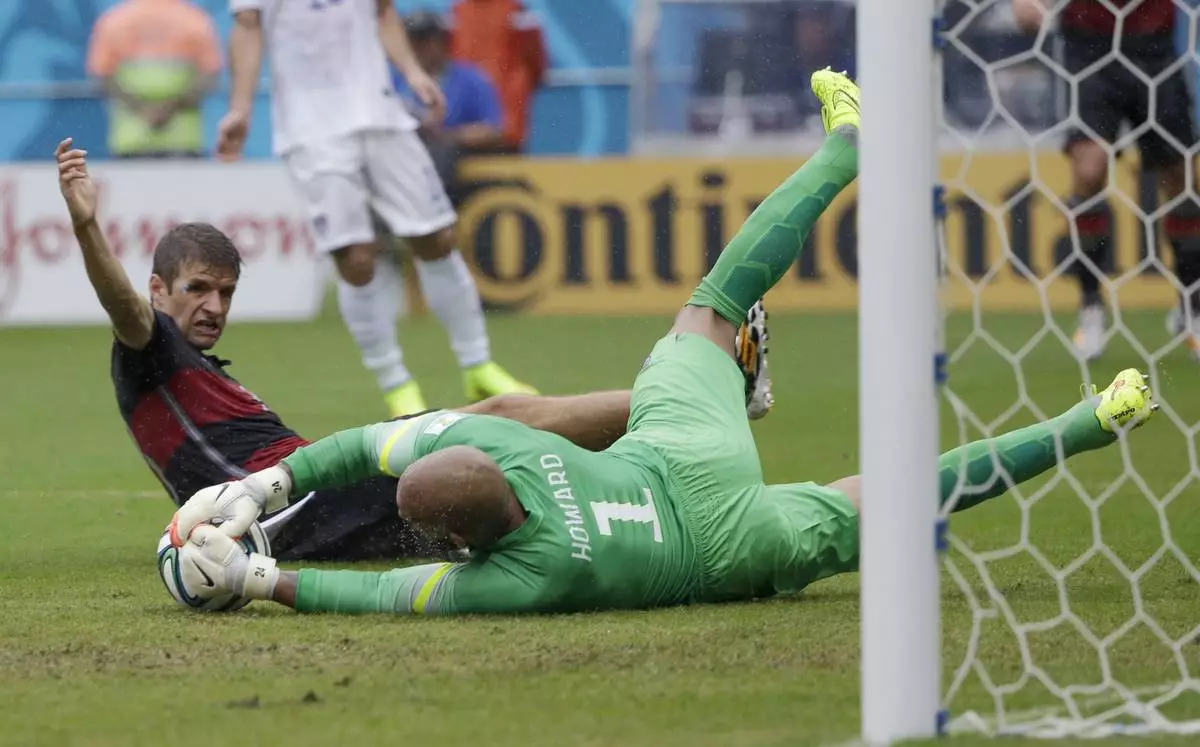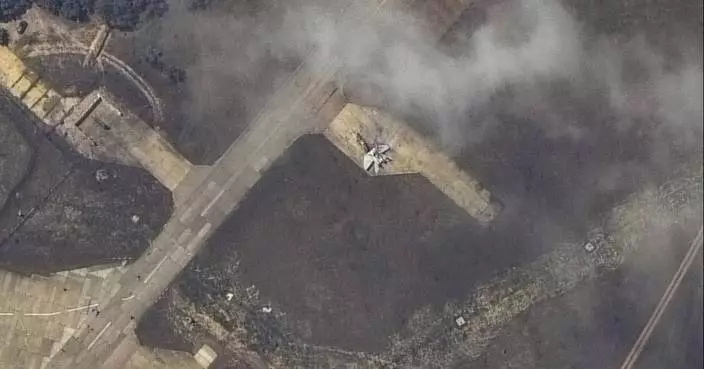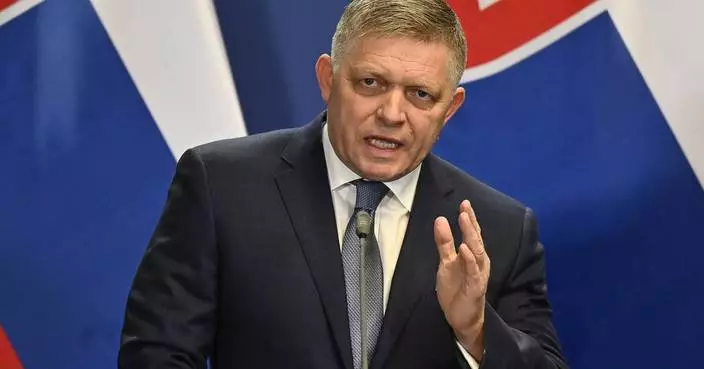Tim Howard was 10 years old when he walked into Giants Stadium's upper deck in June 1989 for a United States-Peru friendly that featured goalkeeper Tony Meola making his second international appearance.
“My earliest soccer memory,” Howard recalled last month.
Howard went on to follow Meola in a line of outstanding American goalkeepers, and on Saturday he will join Meola, Kasey Keller and Brad Friedel in the U.S. National Soccer Hall of Fame.
“Obviously, it is the honor of my life,” Howard said.
Josh McKinney, captain of the U.S. seven-a-side Paralympic team, also was elected from the player ballot. Midfielder Tisha Venturini-Hoch was chosen from the veteran ballot and United Soccer Leagues founder Francisco Marcos was picked from the builder category.
Now 45, Howard started at the 2010 and 2014 World Cups and made 121 international appearances from 2002-17, most among American goalkeepers. His 16 saves in a 2-1, second-round extra time loss to Belgium in 2014 was a zenith. Howard's finale was the nadir, the 2-1 loss at Trinidad and Tobago that ended the Americans' streak of seven straight World Cup appearances.
"U.S. Soccer needed a wake up call," Howard said, looking back.
He played with Major League Soccer’s New York/New Jersey MetroStars from 1998 to 2003, then in England for Manchester United (2003-06) and Everton (2006-16). He returned to MLS with Colorado from 2016-19 and finished in 2020 with second-tier Memphis, where he is a non-controlling owner and sporting director.
No top successor has emerged at the national team.
Zack Steffen failed to get regular time at Manchester City and returned to Major League Soccer this year. Matt Turner lost his starting job in the Premier League after a series of soft goals, and Ethan Horvath is in England's second division.
“We had it locked. We had this goalkeeping thing figured out for a long time, didn’t we? Going all the way back. And, yeah, it just seems like we’ve had a little bit of a rut,” Howard said.
“The game has continued to evolve, and I don’t know if our young goalkeepers are getting pushed as hard as they need to, to that breaking point,” he continued. “One of the things that Kasey Keller said to me when I signed with Manchester United, and it stuck with me forever, he just said, look, in order to be judged as a goalkeeper you have to play 100 games at the highest level. And right now, our young guys aren’t getting those games to even be able to judge them.
“I like Zack, and I like Matt. I do like Matt’s wherewithal, fortitude and mental toughness," Howard added. “Zack’s talent is unmatched and I’ve always said about Zack he could be the greatest U.S. goalkeeper of all time because of the physical tools that he possesses.”
In his fourth season as an analyst for NBC's Premier League coverage, Howard faulted the American preparation system.
“The goalkeeping coaching has dropped a level, as well, if I’m being brutally honest,” he said, “because when you look at some of these top goalkeepers that we’ve produced through the years, they’ve always had high-level goalkeeping coaches. And I can say that because I’ve seen the worst of the worst, and I’ve seen the best of the best in my career. And I think high-level goalkeeping coaching is down.”
Howard was open early in his career that he had Tourette syndrome, a neurological disorder causing involuntary, repetitive movements. He became an advocate and fundraiser for those afflicted.
“I just wanted to kind of get ahead of it and put it out there before anybody could really scrutinize and criticize me for it, knowing that I was climbing that ladder and going to be in the spotlight had I become a starter,” he said. “I appreciate the sensitivity with which people have covered my journey with Tourette syndrome throughout the course of my career because, quite frankly, I’m being brutally honest with you, I can handle it. There’s nothing anyone can throw at me that I can’t handle.”
AP soccer: https://apnews.com/hub/soccer

FILE - Everton's American goalkeeper Tim Howard celebrates their victory against Arsenal during their English Premier League soccer match at Goodison Park Stadium in Liverpool, England, March 18, 2007. Tim Howard will join Tony Meola, Kasey Keller and Brad Friedel on Saturday as modern-era American goalkeepers in the U.S. National Soccer Hall of Fame. (AP Photo/Dave Thompson, File)

FILE - United States' goalkeeper Tim Howard dives to make a save on Germany's Thomas Mueller during the group G World Cup soccer match between the USA and Germany at the Arena Pernambuco in Recife, Brazil, Thursday, June 26, 2014. Tim Howard will join Tony Meola, Kasey Keller and Brad Friedel on Saturday, May 4, 2024, as modern-era American goalkeepers in the U.S. National Soccer Hall of Fame. (AP Photo/Ricardo Mazalan, File)

FILE - United States goalkeeper Tim Howard talks to reporters before a training session in Sao Paulo, Brazil, June 28, 2014. Tim Howard will join Tony Meola, Kasey Keller and Brad Friedel on Saturday, May 4, 2024, as modern-era American goalkeepers in the U.S. National Soccer Hall of Fame. (AP Photo/Julio Cortez, File)

FILE -Colorado Rapids goalkeeper Tim Howard celebrates as time runs out in the team's MLS soccer match against the Portland Timbers on Saturday, June 17, 2017, in Commerce City, Colo. The Rapids won 2-1. Tim Howard will join Tony Meola, Kasey Keller and Brad Friedel on Saturday, May 4, 2024, as modern-era American goalkeepers in the U.S. National Soccer Hall of Fame. (AP Photo/David Zalubowski, File)
WASHINGTON (AP) — Trucks carrying badly needed aid for the Gaza Strip rolled across a newly built U.S. pier and into the besieged enclave for the first time Friday as Israeli restrictions on border crossings and heavy fighting hindered the delivery of food and other supplies.
The shipment is the first in an operation that American military officials anticipate could scale up to 150 truckloads a day, all while Israel presses in on the southern city of Rafah in its 7-month offensive against Hamas.
But the U.S. and aid groups warn that the floating pier project is not a substitute for land deliveries that could bring in all the food, water and fuel needed in Gaza. Before the war, more than 500 truckloads entered the territory on an average day.
The operation's success also remains tenuous because of the risk of militant attack, logistical hurdles and a growing shortage of fuel for the trucks to run due to the Israeli blockade of Gaza since Hamas' Oct. 7 attack. Militants killed 1,200 people and took 250 others hostage in that assault on southern Israel. The Israeli offensive since has killed more than 35,000 Palestinians in Gaza, local health officials say, while hundreds more have been killed in the West Bank.
Aid agencies say they are running out of food in southern Gaza and fuel is dwindling, while the U.S. Agency for International Development and the World Food Program say famine has already taken hold in Gaza’s north.
Troops finished installing the floating pier on Thursday, and the U.S. military's Central Command said the first aid crossed into Gaza at 9 a.m. Friday. It said no American troops went ashore in the operation.
“This is an ongoing, multinational effort to deliver additional aid to Palestinian civilians in Gaza via a maritime corridor that is entirely humanitarian in nature, and will involve aid commodities donated by a number of countries and humanitarian organizations,” the command said.
The Pentagon said no backups were expected in the distribution process, which is being coordinated by the United Nations.
The U.N., however, said fuel deliveries brought through land routes have all but stopped and this will make it extremely difficult to bring the aid to Gaza’s people.
“We desperately need fuel,” U.N. deputy spokesperson Farhan Haq said. “It doesn’t matter how the aid comes, whether it’s by sea or whether by land, without fuel, aid won’t get to the people.”
Pentagon spokesperson Sabrina Singh said the issue of fuel deliveries comes up in all U.S. conversations with the Israelis. She also said the plan is to begin slowly with the sea route and ramp up the truck deliveries over time as they work the kinks out of the system.
Israel fears Hamas will use fuel in the war, but it asserts it places no limits on the entry of humanitarian aid and blames the U.N. for delays in distributing goods entering Gaza. Under pressure from the U.S., Israel has opened a pair of crossings to deliver aid into the territory’s hard-hit north in recent weeks.
It has said that a series of Hamas attacks on the main crossing, Kerem Shalom, have disrupted the flow of goods. The U.N. says fighting, Israeli fire and chaotic security conditions have hindered delivery. There have also been violent protests by Israelis that disrupted aid shipments.
Israel recently seized the key Rafah border crossing in its push against Hamas around that city on the Egyptian border, raising fears about civilians' safety while also cutting off the main entry for aid into the Gaza Strip.
U.S. President Joe Biden ordered the pier project, expected to cost $320 million. The boatloads of aid will be deposited at a port facility built by the Israelis just southwest of Gaza City and then distributed by aid groups.
U.S. officials said the initial shipment totaled as much as 500 tons of aid. The U.S. has closely coordinated with Israel on how to protect the ships and personnel working on the beach.
But there are still questions about the safety of aid workers who distribute the food, said Sonali Korde, assistant to the administrator of USAID's Bureau for Humanitarian Assistance, which is helping with logistics.
“There is a very insecure operating environment,” and aid groups are still struggling to get clearance for their planned movements in Gaza, Korde said.
That concern was highlighted last month when Israeli strike killed seven relief workers from World Central Kitchen whose trip had been coordinated with Israeli officials. The group had also brought aid in by sea.
Pentagon officials have made it clear that security conditions will be monitored closely and could prompt a shutdown of the maritime route, even if just temporarily. Navy Vice Adm. Brad Cooper, a deputy commander at the U.S. military’s Central Command, told reporters Thursday that “we are confident in the ability of this security arrangement to protect those involved.”
Already, the site has been targeted by mortar fire during its construction, and Hamas has threatened to target any foreign forces who “occupy” the Gaza Strip.
Biden has made it clear that there will be no U.S. forces on the ground in Gaza, so third-country contractors will drive the trucks onto the shore.
Israeli forces are in charge of security on shore, but there are also two U.S. Navy warships nearby that can protect U.S. troops and others.
The aid for the sea route is collected and inspected in Cyprus, then loaded onto ships and taken about 200 miles (320 kilometers) to the large floating pier off the Gaza coast. There, the pallets are transferred onto the trucks that then drive onto the Army boats, which will shuttle the trucks from the pier to a floating causeway anchored to the beach. Once the trucks drop off the aid, they return to the boats.
Gambrell reported from Dubai, United Arab Emirates.

The image provided by U.S, Central Command, shows U.S. Army soldiers assigned to the 7th Transportation Brigade (Expeditionary), U.S. Navy sailors assigned to Amphibious Construction Battalion 1, and Israel Defense Forces placing the Trident Pier on the coast of Gaza Strip on Thursday, May 16, 2024. The temporary pier is part of the Joint Logistics Over-the-Shore capability. The U.S. military finished installing the floating pier on Thursday, with officials poised to begin ferrying badly needed humanitarian aid into the enclave besieged over seven months of intense fighting in the Israel-Hamas war. (U.S. Central Command via AP)

The image provided by U.S, Central Command, shows U.S. Army soldiers assigned to the 7th Transportation Brigade (Expeditionary), U.S. Navy sailors assigned to Amphibious Construction Battalion 1, and Israel Defense Forces placing the Trident Pier on the coast of Gaza Strip on Thursday, May 16, 2024. The temporary pier is part of the Joint Logistics Over-the-Shore capability. The U.S. military finished installing the floating pier on Thursday, with officials poised to begin ferrying badly needed humanitarian aid into the enclave besieged over seven months of intense fighting in the Israel-Hamas war. (U.S. Central Command via AP)

This satellite image from Planet Labs PBC shows a pier installed by the U.S. military in the Gaza Strip on Thursday, May 16, 2024. (Planet Labs PBC via AP)

The image provided by U.S, Central Command, shows U.S. Army soldiers assigned to the 7th Transportation Brigade (Expeditionary), U.S. Navy sailors assigned to Amphibious Construction Battalion 1, and Israel Defense Forces placing the Trident Pier on the coast of Gaza Strip on Thursday, May 16, 2024. The temporary pier is part of the Joint Logistics Over-the-Shore capability. The U.S. military finished installing the floating pier on Thursday, with officials poised to begin ferrying badly needed humanitarian aid into the enclave besieged over seven months of intense fighting in the Israel-Hamas war. (U.S. Central Command via AP)

















